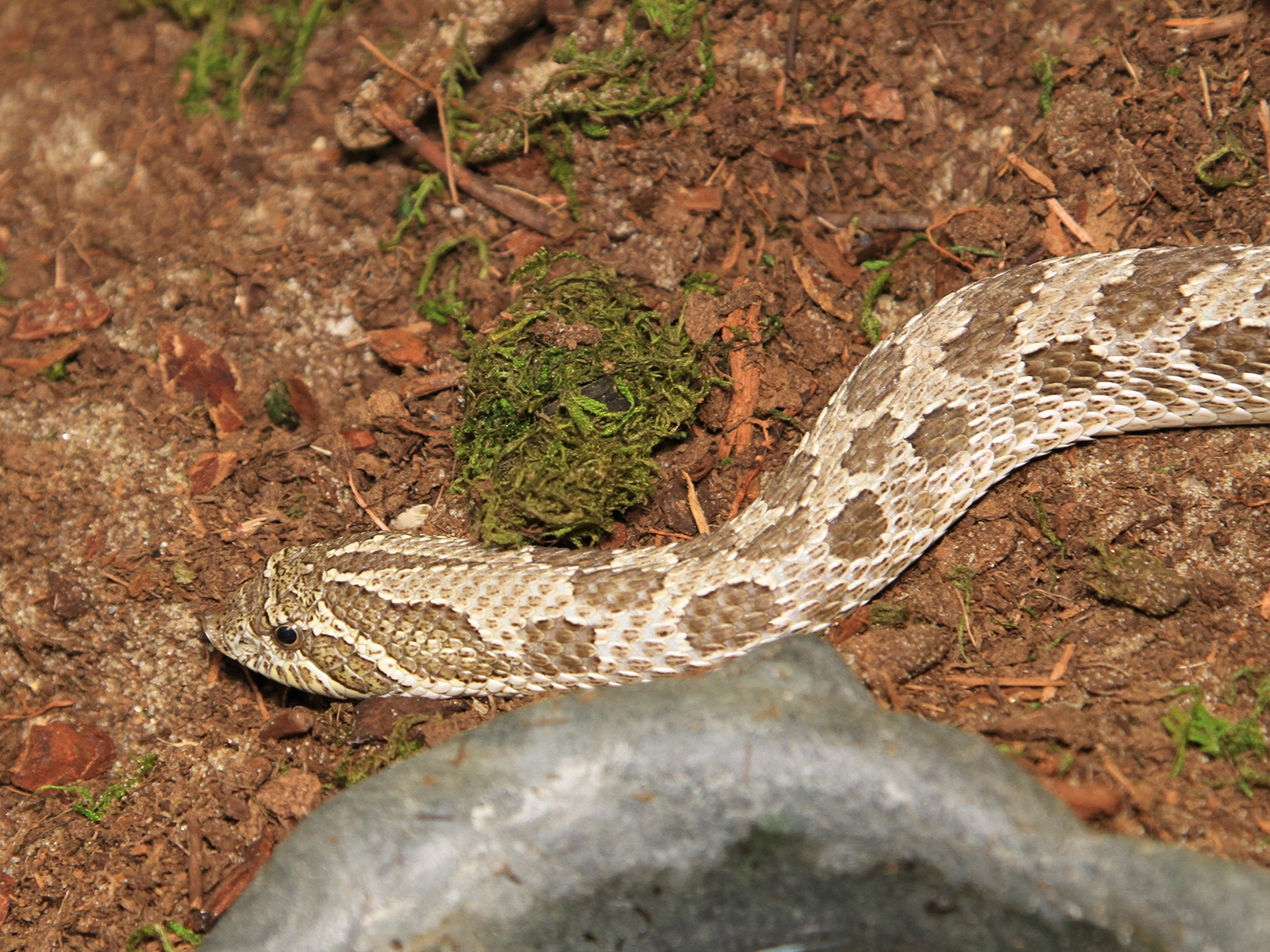Western Hognose Snake
Heterodon nasicus
Class
Reptilia
Order
Squamata
Family
Colubridae

Reptilia
Squamata
Colubridae
Central United States, northern Mexico, and southern Canada
Length: Up to 35 in
Weight: 2 - 13 oz
Sandy prairies, scrublands, and floodplains
Clutch: 4 - 23 eggs
Incubation: 9 weeks
Small lizards, reptile eggs, birds, and small rodents.
Least Concern
When threatened, it first tries to mimic a venomous cobra by flattening its neck into a hood, inflating its body, hissing, and fake-striking. If that fails, it dramatically plays dead: rolling onto its back, exposing its belly, and staying completely limp with its mouth open and tongue lolling out.
The name of this snake comes from the distinct up-turned scale on its nose. This scale can be used to forage for food as well as to dig burrows.
The hognose snake produces mildly toxic saliva in its Duvernoy’s gland, but it isn't dangerous to people. A bite will typically cause only slight swelling and pain.